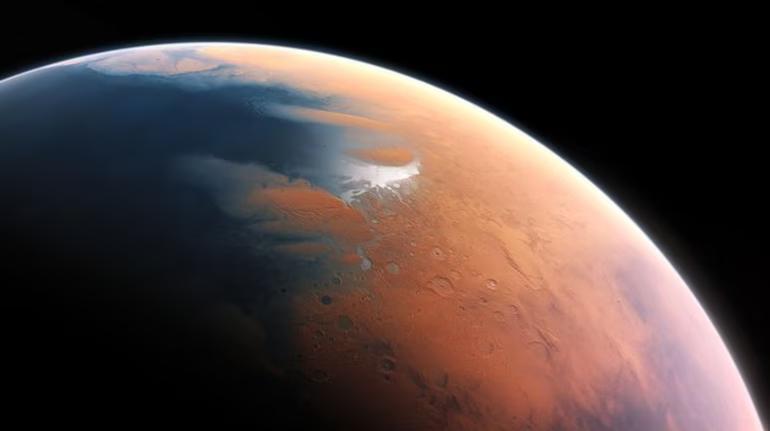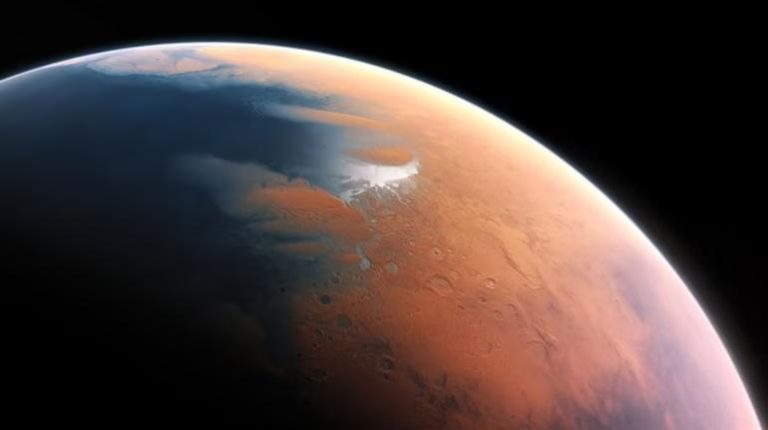
Mars May Have Once Had Rain & Snowfall, Finds New Study
The red planet, Mars, has long been a subject of fascination for scientists and space enthusiasts alike. With its barren landscape and rocky terrain, it’s hard to imagine that Mars could have once been a place where rain and snowfall occurred. However, a recent study by the University of Colorado Boulder has shed new light on the planet’s past, suggesting that Mars may have experienced rainfall and snowfall, feeding valleys and channels.
The study, published in the journal Science Advances, analyzed data from NASA’s Mars Reconnaissance Orbiter and found evidence of ancient riverbeds, lakes, and even oceanic environments. This is not the first time that scientists have suggested that water may have existed on the surface of Mars, but this new study provides further evidence of the planet’s watery past.
According to the study, the water on Mars is believed to have originated from the planet’s surface, rather than from the atmosphere. This suggests that the water may have been present in the form of liquid water, rather than just ice or vapor. The study’s authors believe that the water may have been fed by rainfall and snowmelt, which would have flowed into valleys and channels, creating a network of waterways.
One of the key pieces of evidence cited in the study is the presence of sedimentary rocks on Mars. Sedimentary rocks are formed when sediments, such as sand and silt, are compressed and cemented together over time. The presence of these rocks on Mars suggests that the planet may have once had a watery environment, where sediments could have accumulated and been compressed into rocks.
The study’s authors also analyzed data from NASA’s Mars Global Surveyor, which has been orbiting the planet since 1996. The surveyor has been mapping the planet’s surface in high resolution, and the study’s authors used this data to identify features that could be indicative of ancient waterways.
One of the most compelling pieces of evidence is the presence of “recurring slope lineae” (RSL) on Mars. RSL are dark streaks that appear on the planet’s surface during the warmest months of the year, and are believed to be the result of briny water flowing down slopes. The study’s authors suggest that these streaks may be evidence of ancient waterways, where water may have flowed into valleys and channels.
The study’s findings are significant, not just because they suggest that Mars may have had a watery past, but also because they provide evidence of the planet’s potential for supporting life. Water is essential for life as we know it, and the presence of liquid water on Mars would have created a more hospitable environment for life to emerge.
The study’s authors are quick to point out that the water on Mars may not have been suitable for life as we know it. The planet’s atmosphere is much thinner than Earth’s, and the temperature is much colder. However, the presence of liquid water would have created a more favorable environment for life to emerge, and the study’s findings suggest that Mars may have had conditions that were friendly to life.
While the study’s findings are exciting, they also raise more questions than they answer. For example, where did the water on Mars come from? Was it the result of comets or meteorites impacting the planet, or did it originate from the planet’s interior? The study’s authors suggest that further research is needed to answer these questions and to better understand the planet’s watery past.
In conclusion, the study’s findings suggest that Mars may have once had rain and snowfall, feeding valleys and channels. The presence of sedimentary rocks, recurring slope lineae, and ancient riverbeds all point to a watery past on the red planet. While the study’s findings are exciting, they also raise more questions than they answer, and further research is needed to better understand the planet’s history.






